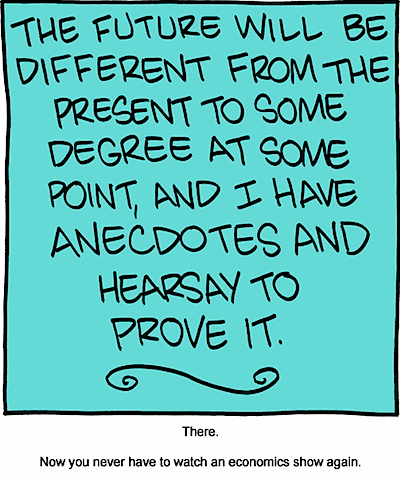 The following first appeared in the British Journal for the History of Science (2009).
The following first appeared in the British Journal for the History of Science (2009).
It is not often that one reads a book that discusses both the sixteenth century Spanish human rights advocate Bartolomé de Las Casas and the twentieth century American neo-Nazi Richard Butler, but David Livingstone’s latest monograph does just that. Livingstone offers a history of pre-adamism – the idea that human beings inhabited the Earth before Adam and that their descendents may still occupy the planet – and its engagement with race, religion and human evolution. In so doing, he covers a millennium of theology, natural philosophy, geography, ethnography and anthropology in an even-handed manner and a reader is doubtlessly going to learn much and come away impressed with Livingstone’s synthesis.
In the 1920’s the Canadian creationist George McCready Price succinctly summarized the centrality of Adam and the issue of human origins for those that hold the account presented in Genesis to be literally true: “No Adam, No Fall; No Fall, No Atonement; No Atonement; No Savior” went his oft-quoted syllogism. Without an historical Adam, there would be no original sin and no reason for the atoning death of Christ. Thus the very foundation of Christianity would be removed. Yet it was obvious to many readers of Genesis that there were problems with the narrative if read literally, one such problem being the question of the origin of Cain’s wife and of why Cain feared for his life after being banished by God. Could it have been that there were humans who were not descendents of Adam? Livingstone begins his account by outlining three further issues that raised problems for the historicity of the Genesis account of creation. The first of these was the increasing availability of non-Judeo-Christian accounts that clearly were of ancient origin yet went against claims made in the canonical texts. The second of these was the presence of “monstrous races” as detailed by Pliny, Strabo & Herodotus and their problematic relationship to humans. If these existed – and few doubted the fact – were they human and therefore should they be baptized? Lastly, and somewhat related, there was the issue of the inhabitants of the New World – if they were human – and thus in need of baptism – how did they fit into a scheme that saw all humans as descendents of Shem, Ham or Japheth? Equally as important, how did they end up at the other side of the world? Indeed the possibility of extra-terrestrial life – as raised by Giordano Bruno and Tomaso Campanella – only exacerbated these problems. These were serious questions that worried the best minds of the early modern period.
A French theologian, Isaac La Peyrère, offered one solution in 1655 in his work, Prae-Adamitae. The works English subtitle gave a clue as to La Peyrère’s methods: “A Discourse Upon the Twelfth, Thirteenth, and Fourteenth Verses of the Fifth Chapter of the Epistle of the Apostle Paul to the Romans. By Which Are Prov’d, That Men were Created before Adam” and he used scriptutal exegesis and non-Christian sources to argue for a polygenism that was not tainted with racial inequality. La Peyrère claims went beyond simple advocacy of plural origins for humans; he furthermore claimed that the Scriptures were fallible human transcriptions, that Moses was not the sole author of the Pentateuch, that the Noachian Flood was localized, and that Adam was only the father of the Jews. Clearly this early form of biblical criticism could not go unpunished and La Peyrère was forced to recant his views. As Livingstone notes, this recantation did not prevent the Pre-Adamite theory having significant impact on future thought in relation to the origin of humans.
A major portion of Livingstone’s account is taken with how individuals – both creationist and evolutionist, believer and infidel – wrestled with pre-adamism and its manifest consequences, and it would be impossible for me to summarize the rich vein that he successfully mines. Despite the idea being favored by atheists and unbelievers who sought to undermine Scripture, pre-adamism would equally become deployed as a means to preserve scriptural reliability when faced with such criticism. Interpretation would allow for two origins of humans as accounted in Genesis, the first being of the human species and the second being of Adam, who was thus seen as father of the Jews (or in certain readings of Caucasians or Aryans). Ethnographers in the nineteenth century were divided between polygenism and monogenism, the latter ultimately receiving support from Darwin’s work. This in turn was opposed by the polygenist Louis Agassiz who himself supported the racist writings of Samuel Morton, Josiah Nott and George Gliddon. Pre-adamism thus fed into the rhetoric of Antebellum America and became as important politically as it was theologically. In opposition to the claims of many modern anti-evolutionists, Livingstone makes it clear that many apologists for slavery (and racial inequality) sought support not in the writings of Darwin but in Scripture, some going as far as to claim that Eve’s sin was one of miscegenation with a black pre-adamite.
The amazing scope of Livingstone’s work lends to its appeal. Having personally written at various times about Agassiz, Thomas Chalmers, Hugh Miller, George Pye Smith, Robert Chambers and St George Jackson Mivart, I was pleasantly surprised to encounter these theologically diverse individuals in this work, often in unexpected contexts. Historians of other eras are likely to have similar encounters. Livingstone’s book is highly recommended both for its sweeping synthesis and the nature of the questions it raises in the mind of the reader.
David N. Livingstone, Adam’s Ancestors: Race, Religion, and the Politics of Human Origins. Baltimore: The Johns Hopkins University Press, 2008.






 The following first appeared in the British Journal for the History of Science (2009).
The following first appeared in the British Journal for the History of Science (2009).